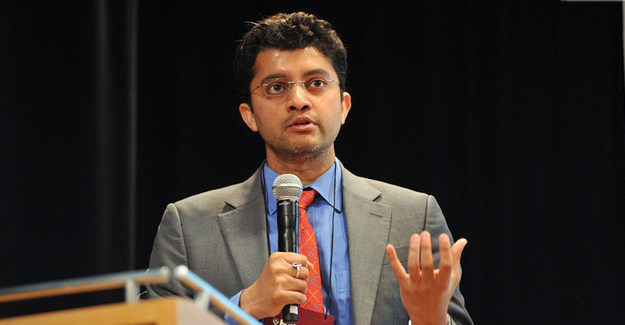
What Killed Retail May Also Save It
Everyone knows Jeff Bezos killed retail. Or was it the millennials? Or maybe the retailers themselves? There's much less debate over the murder weapon: The smartphone did it. Mobile tech turned all the world into a shopping mall, supercharging the reach of online retailers like Amazon, and empowering consumers to "showroom" - that is, check every price tag encountered in physical stores against online competitors.
But what killed retail may now be able to save it, Anindya Ghose, a professor at New York University's Stern School of Business, argues in his new book, "Tap: Unlocking the Mobile Economy." "The same mobile phone that was harming retailers is now a huge blessing for them," Ghose believes. Retailers can now use mobile phones to leverage the vast amount of data they've collected on customers, and can then combine that information with GPS locations, weather forecasts and other data to lure shoppers into their stores in new and interesting ways, Ghose says.
More retailers are using geofencing and GPS beacons to track customers' proximity to not only the store but to particular locations within the property, in order to send out just the right offers at just the right moment, Ghose said. Some have taken this a step further and adopted "geoconquesting," using location data to detect when customers are in a competitor's store, sending them a good enough deal to convince them to leave. Department stores including corporate siblings Macy's and Bloomingdale's have already begun installing such GPS beacons, according to Ghose. Macy's customers, for instance, will be pinged on their apps when they are near the store with special discounts.
"There's a fascinating video of this in action at a shopping mall in Guatemala," Ghose says. "A sports apparel retailer used geoconquesting to encroach on a competitor's customers." A discount would be sent to the customer's mobile phone starting at 100% and decreasing 1% every few seconds, prompting the shopper to race across the mall.
And even if these efforts are unlikely to beat back the success of online retailers, they are also only the beginning, Ghose contends. Retailers continue to experiment with new ways to use the troves of data they have on their customers to help boost sales at physical stores.
For instance, Ghose's research has found that shoppers are more susceptible to pitches from retailers during their commutes, that groups of three people are easier to target than twos or fours, that good and bad weather can be powerful motivators, and that the key to understanding customers is tracking their habits. "We think we are all very spontaneous, when in fact we are very predictable," Ghose said.
Textile Excellence
If you wish to Subscribe to Textile Excellence Print Edition, kindly fill in the below form and we shall get back to you with details.








